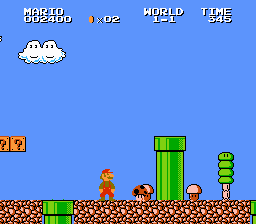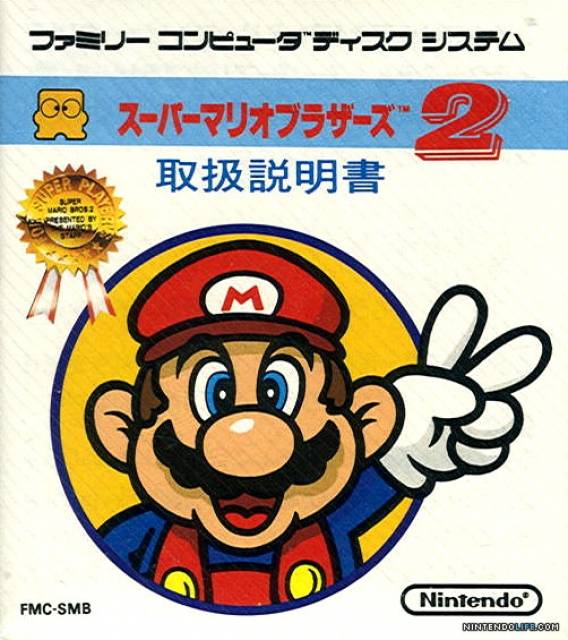Overview

Super Mario Bros.: The Lost Levels (known in Japan as Super Mario Bros. 2 and Super Mario Bros. 2: For Super Players) is a platforming game developed and published by Nintendo for the Family Computer Disk System (in Japan only) on May 3, 1986. The Japanese sequel to Super Mario Bros. (not to be confused with the American sequel of the same name), Super Mario Bros. 2 adds eight difficult new worlds (including one hidden world, reachable by clearing the game without the use of Warp Zones) and some new gameplay mechanics (such as the Poison Mushroom power-down, which harms the player when touched, and the option to pick Luigi, who sacrifices running speed and traction for jumping height).
With Super Mario Bros. 2, Shigeru Miyamoto and Takashi Tezuka (who was the assistant director of SMB1) sought to design a more difficult game for players who had mastered the first one. New masochistic mechanics include warp zones that take player back in the level, severe wind gusts that blow Mario off of platforms, and the aforementioned Poison Mushrooms. Even the secret coin areas were made more arduous. Nintendo tipped their hand with regards to difficulty by having the commercials for the game feature little kids screaming at the TV in frustration while playing. The game was rejected for release by Nintendo of America's Howard Philips in North America because of its excessive difficulty, for fear the game would not sell well. Instead, North America's Super Mario Bros. 2 was a retrofit of another Japanese game, Yume Kōjō: Doki Doki Panic, released in 1987, with gameplay improvements and the Mario cast as playable characters.
While the original FDS version was not released worldwide in its original form, it was released worldwide for the Wii (via the Wii Virtual Console) on May 1, 2007 and Nintendo 3DS (via 3DS Virtual Console) on December 27, 2012. An enhanced remake was released on July 2, 1993 for the Super Nintendo Entertainment System in the Super Mario All-Stars compilation. It was also ported to the Game Boy Color on April 10, 1999 as an unlockable reward in Super Mario Bros. Deluxe. The game was also ported to the Game Boy Advance in Japan on July 10, 2004 as part of the Famicom Mini collection.
The game has also been ported to the Super Mario themed Game and Watch released on November 13, 2020.

 Game Boy Advance
Game Boy Advance Wii Shop
Wii Shop Famicom Disk System
Famicom Disk System Nintendo 3DS eShop
Nintendo 3DS eShop Wii U
Wii U





























